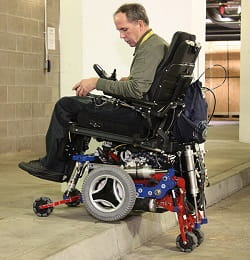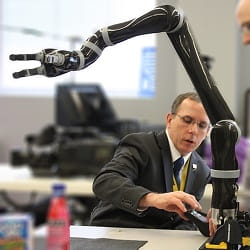
2/14/2020
The 45-minute briefing will be held in the 2020 AAAS Annual Meeting Newsroom at noon and will stream live on EurekAlert! for those who want to tune in remotely. Other panelists include
Karen Burg, Ph.D., of the
University of Georgia, who will discuss the unique challenges facing women and girls in STEM — science, technology, engineering and mathematics — and
Juan Gilbert, Ph.D., of the
University of Florida, who will focus on racial and ethnic minorities. A 90-minute public panel with the same researchers will take place at 10 a.m., Saturday, February 15.
A
recent report and
widely-shared editorial show that the number of patents a person holds as an adult is better predicted by zip code, wealth, gender and ethnicity than by childhood aptitude or interests.
These articles argue that more equitable early STEM education and a more inclusive culture in higher education and industry could help realize the potential of innovative individuals who weren’t born into privilege, whom the authors refer to as “lost Einsteins,” and boost the
U.S. economy, which thrives on innovation.
“Kids with disabilities are shunted away from science,” Cooper said before the briefing. “They’re stuck observing other kids rather than doing the science themselves.”
Teachers and administrators, from elementary school all the way through college, need to think harder about engaging students with disabilities in the experiments the rest of the class is doing, Cooper said. Observing isn’t the same as being included.

Cooper, himself a disabled veteran, has spent 30 years recruiting students with disabilities to HERL so that they can contribute to society as scientists and engineers.
Besides bringing unique perspectives that can inform research — for instance,
wheelchair users designing better wheelchairs — these students often arrive with a lifetime of experience interacting with technology, which could be a real asset to the team.
“Children with disabilities are exposed to technology at a very young age,” Cooper said. “A child with impaired mobility might be driving a robot at 2- or 3-years-old. There are 3-year-olds using speech-to-text or gesture-to-speech technology. Most people don’t learn that until college.”
Cooper hopes a model like HERL’s that intentionally hires people with disabilities will help level the playing field so these young inventors can launch their careers and then go on to start their own companies, labs and centers to give others the same opportunity.
“I tell students, ‘I know how hard the job market is,’” Cooper said. “You may just have to go out and create one.”
PHOTO INFO: (click images for high-res versions)
CREDIT both: Michael Lain, University of Pittsburgh
CAPTIONS:
Top: Rory Cooper, Ph.D., director of the Human Engineering Research Laboratories, and distinguished professor of rehabilitation science and technology works on a robotic arm.
Bottom: Rory Cooper, Ph.D., and his team at the Human Engineering Research Laboratories invented the MEBot robotic wheelchair to increase mobility for wheelchair users. It can climb stairs, handle hiking trails and maintain traction on a patch of ice.

 SEATTLE – During a press briefing today, Rory Cooper, Ph.D., director of the Human Engineering Research Laboratories (HERL) — a partnership between the University of Pittsburgh and the U.S. Department of Veterans Affairs — will discuss how people with disabilities are shut off from STEM careers and why inclusivity matters.
SEATTLE – During a press briefing today, Rory Cooper, Ph.D., director of the Human Engineering Research Laboratories (HERL) — a partnership between the University of Pittsburgh and the U.S. Department of Veterans Affairs — will discuss how people with disabilities are shut off from STEM careers and why inclusivity matters.  Cooper, himself a disabled veteran, has spent 30 years recruiting students with disabilities to HERL so that they can contribute to society as scientists and engineers.
Cooper, himself a disabled veteran, has spent 30 years recruiting students with disabilities to HERL so that they can contribute to society as scientists and engineers. 















